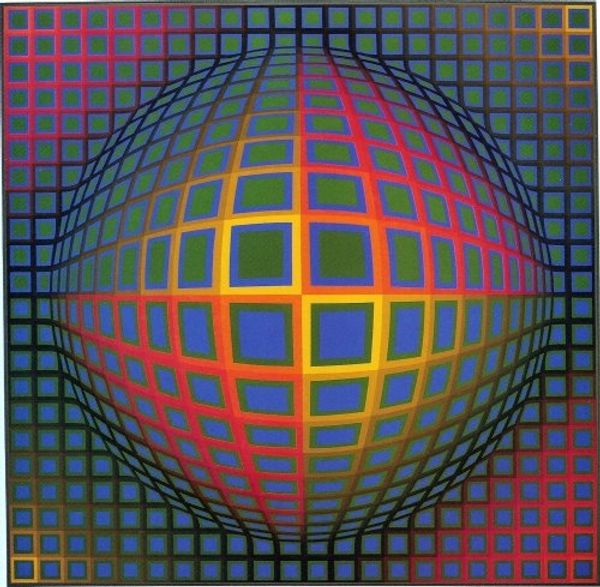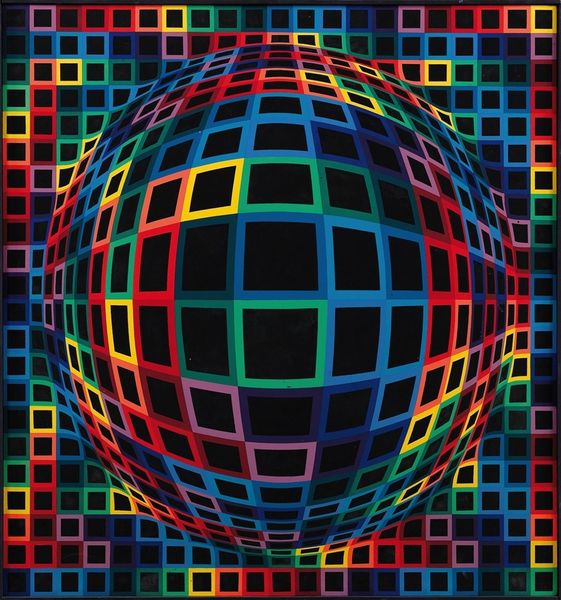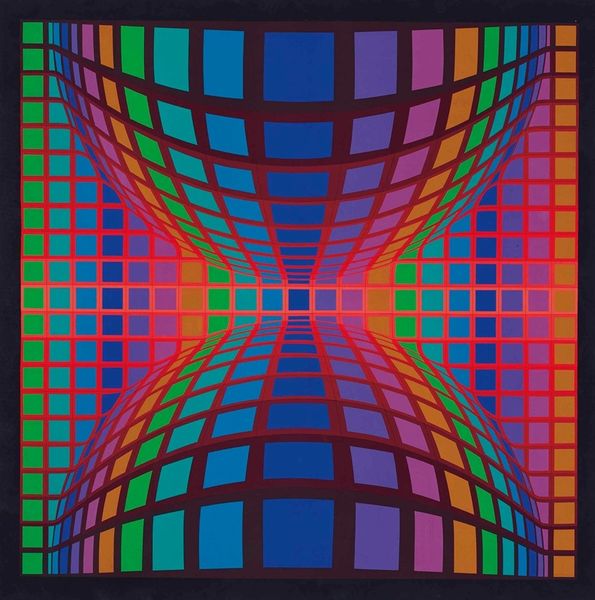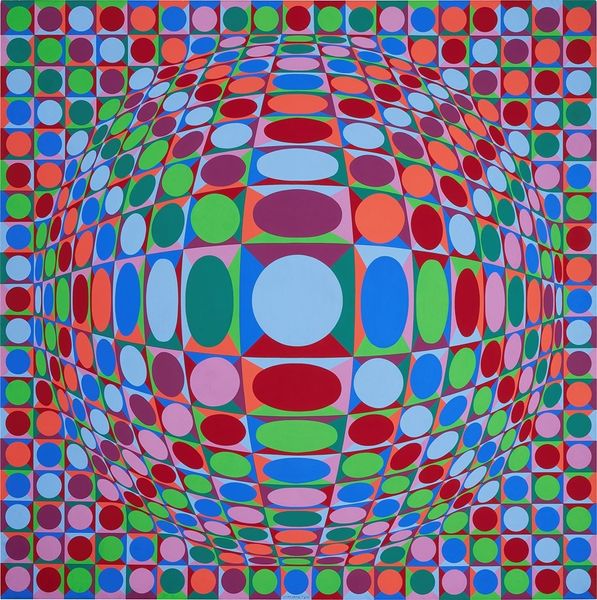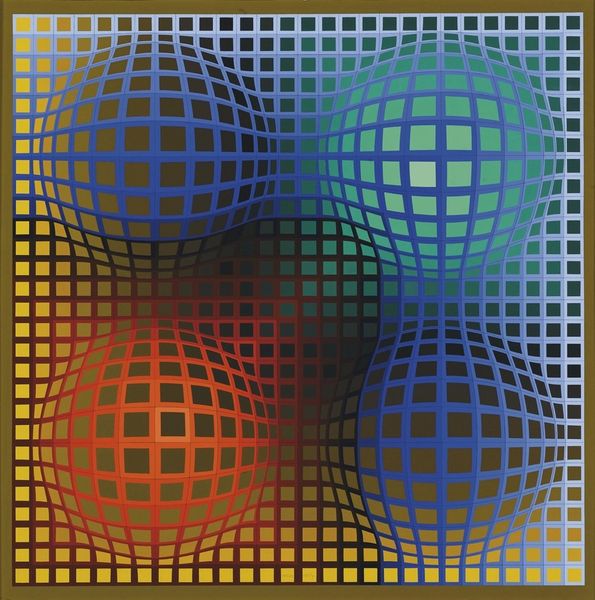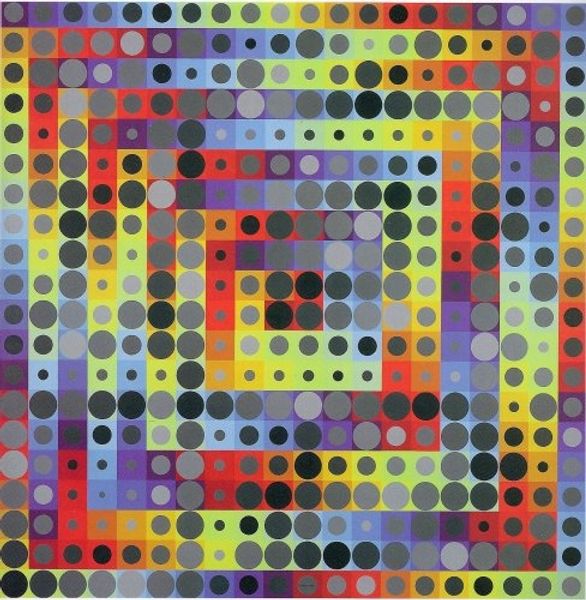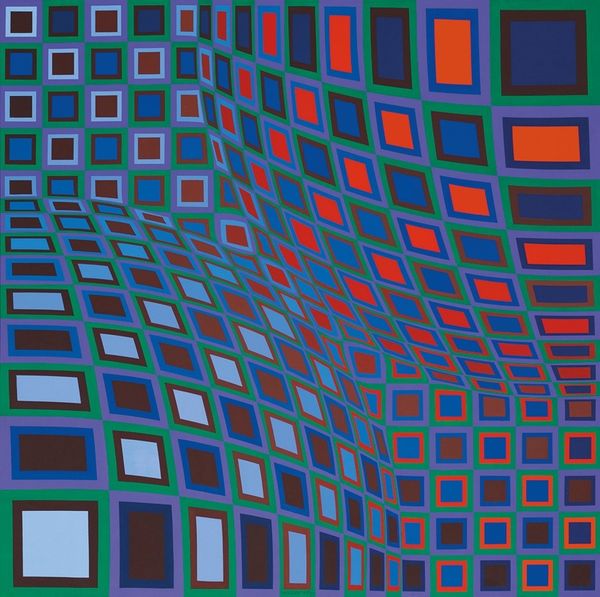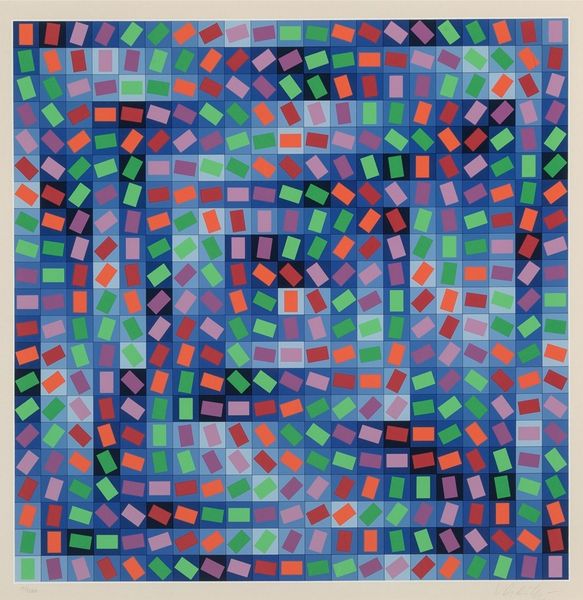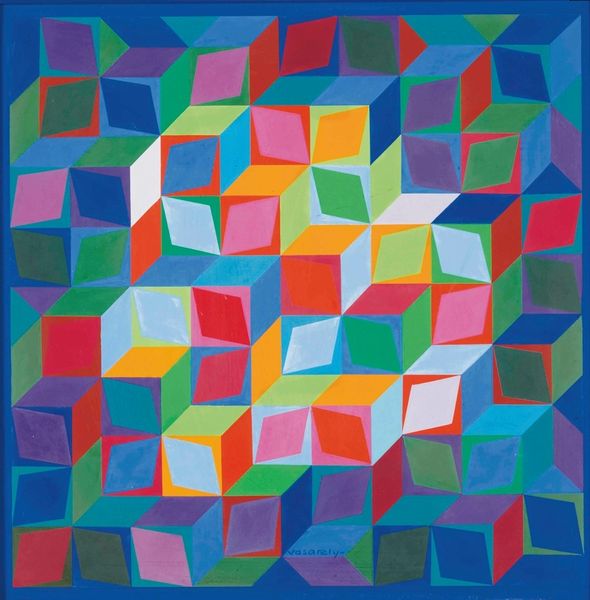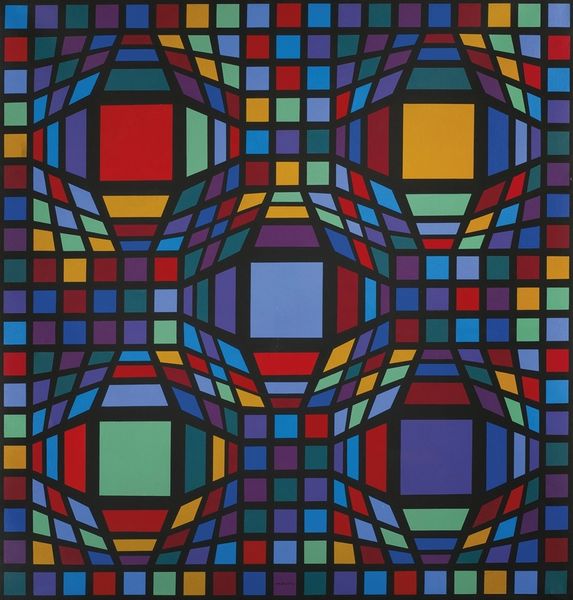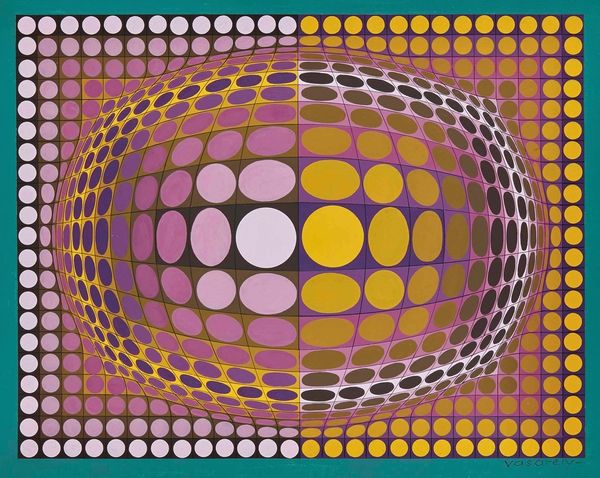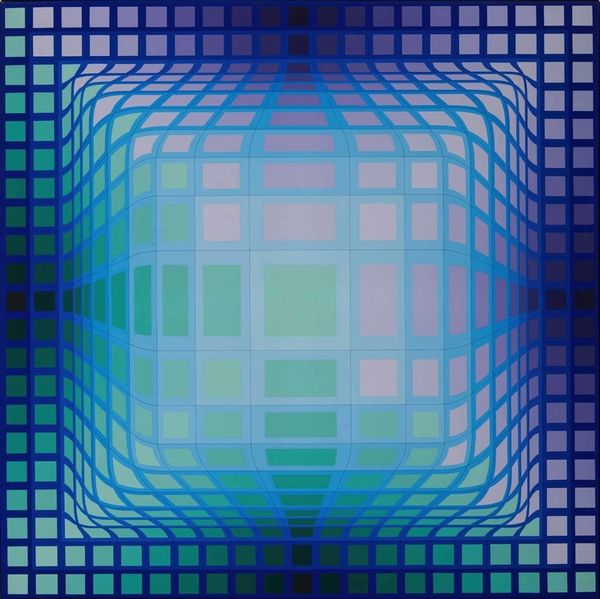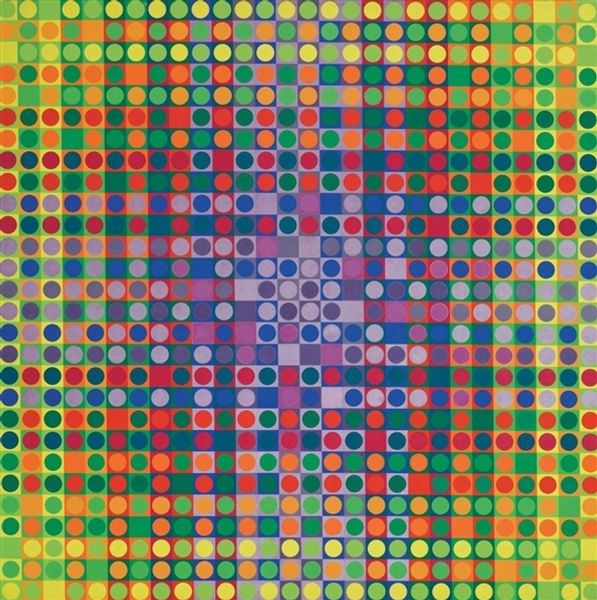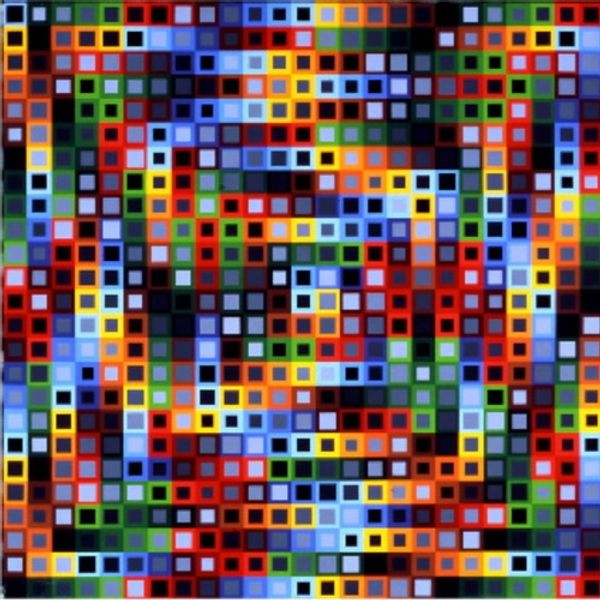
acrylic-paint
#
op-art
#
pattern
#
pattern
#
acrylic-paint
#
geometric pattern
#
abstract pattern
#
organic pattern
#
geometric
#
repetition of pattern
#
vertical pattern
#
abstraction
#
pattern repetition
#
layered pattern
#
combined pattern
#
modernism
#
repetitive pattern
Copyright: Victor Vasarely,Fair Use
Editor: This work is titled "OND-DVA" by Victor Vasarely, and it appears to be acrylic on canvas. It's intensely vibrant with its repeating pattern of colorful squares. It’s like the image is bending or swelling outwards. What social messages or contextual meanings do you see at play? Curator: What I see here are some critical dialogues regarding space and perception. Vasarely's op-art style actively challenges our understanding of reality. Think about the historical context: post-war optimism, technological advancements, and a shifting cultural landscape. The work can be examined through the lens of accessibility and democratization of art, a concept central to Vasarely’s practice, as he hoped to engage audiences outside traditional art circles. The distorted grid and use of geometry destabilizes conventional modes of seeing and reinforces a new perception that reflects societal flux and uncertainty. What does it evoke in you, thinking about it in these terms? Editor: I can see that, especially thinking about technology's impact on shifting our viewpoints. I didn't initially connect it to societal democratization, though. So, you see this as art meant to reach and engage people more broadly than the elite? Curator: Exactly! Vasarely believed art should be integrated into everyday life. The bright colors and disorienting patterns were not just aesthetic choices, but statements on the artist's intention to challenge visual norms and engage broader audiences regardless of social class or background. How does this shift in perspective alter your understanding of its composition? Editor: Knowing that he intended to destabilize visual norms and broaden its appeal does change how I look at it; it seems more rebellious and radical. It moves past a cool illusion. Curator: Precisely. The painting invites questions regarding power structures, who gets to define art, and whose reality matters. A single image reflecting revolutionary intent. Editor: I'll definitely be thinking more about this now in terms of broader access to art and destabilization of norms. Thanks!
Comments
No comments
Be the first to comment and join the conversation on the ultimate creative platform.
